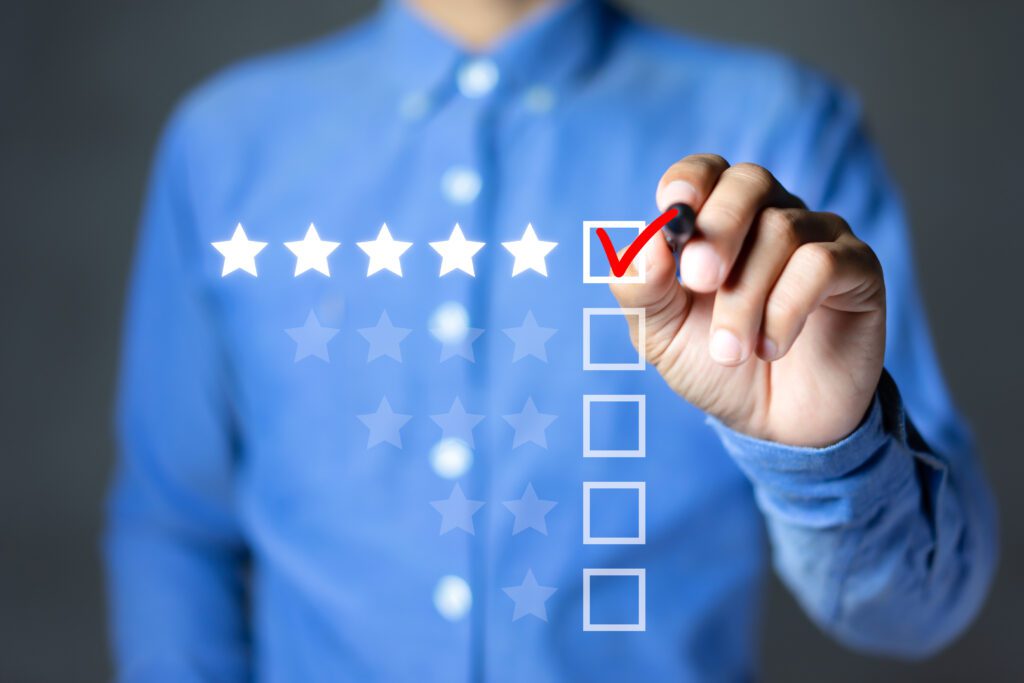
LinkedIn has evolved dramatically since its inception, but one thing remains constant: it’s the premier platform for B2B sales professionals. With over 900 million members globally and 65 million decision-makers active on the platform, LinkedIn offers unparalleled access to your target audience. However, as the platform matures and user behaviors shift, the strategies that worked even a year ago may no longer deliver results.
In 2025, cutting through the noise on LinkedIn requires a sophisticated approach that balances automation with authenticity, content with conversation, and personal branding with business objectives. This article explores the LinkedIn strategies that are genuinely delivering results for B2B sales professionals today.
The LinkedIn Landscape in 2025
LinkedIn’s algorithm and user experience have undergone significant changes in the past few years:
- Content visibility now heavily favors authentic engagement over broadcast messaging
- AI-powered recommendations have become more sophisticated in determining quality content
- Video and interactive content receive significantly more prominence in feeds
- Private messaging has evolved with intelligent filters and priority inboxing
- Personal brands often generate more engagement than company pages
Understanding these shifts is essential to developing a LinkedIn strategy that resonates in today’s environment.
Building a Magnetic Personal Brand
The most successful B2B sales professionals on LinkedIn in 2025 aren’t just promoting their products—they’re building personal brands that attract their ideal customers.
Strategy 1: The Specialized Authority Approach
Generic expertise no longer cuts through. Today’s effective personal branding on LinkedIn requires:
- Hyper-specific positioning that targets a clear niche within your industry
- Consistent perspective sharing on trending topics relevant to your target audience
- Visual brand consistency across your profile, content, and comments
- Authentic storytelling that reveals your professional journey and values
Real-world example: Cybersecurity sales executive Marina Rodriguez established herself as the go-to authority on compliance security for healthcare institutions by sharing specialized insights about regulatory changes, technical implementations, and risk management specifically for this sector. By narrowing her focus from “cybersecurity expert” to “healthcare compliance security specialist,” her content relevance dramatically increased, leading to a 340% growth in qualified leads from LinkedIn.
Strategy 2: Strategic Profile Optimization
Your LinkedIn profile is no longer just a digital resume—it’s a lead-generating landing page:
- Benefit-driven headlines that speak to client outcomes rather than your job title
- Above-the-fold storytelling that hooks viewers within the first three lines
- Strategic keyword placement for LinkedIn’s increasingly sophisticated search algorithm
- Social proof integration with specific results and testimonials
- Clear calls-to-action that guide next steps without being overtly sales-focused
Profile enhancement tip: Replace the standard “I help X do Y” formula with a more compelling structure: “Ask me how [specific companies you’ve helped] achieved [concrete results] through [your unique approach].” This subtle shift positions your profile as a resource rather than a pitch.
Content That Converts
Content strategy on LinkedIn has moved beyond posting frequency to a more nuanced approach that prioritizes conversation and community building.
Strategy 3: The Content Ecosystem Approach
Rather than creating one-off posts, develop interconnected content that builds upon itself:
- Flagship thought leadership (1-2 deeply researched posts weekly)
- Insight amplifiers (short-form daily observations that reinforce your core message)
- Engagement content (questions and polls that spark conversation)
- Value-first comments on relevant discussions in your industry
- Private content sharing (exclusive insights delivered via direct messages)
Content ecosystem example: Enterprise software sales leader Julian Meyer created a content series called “Digital Transformation Decoded” where each week’s flagship post analyzed one aspect of successful transformation projects. Daily short posts highlighted specific challenges or victories from real implementations, while polls gathered industry perspectives on barriers to adoption. This ecosystem approach generated 3.8x more leads than his previous strategy of posting unconnected “value-adding” content several times a week.
Strategy 4: Visual Differentiation
With feeds becoming increasingly crowded, visual distinctiveness is no longer optional:
- Custom-branded templates that make your content instantly recognizable
- Data visualization that transforms complex insights into accessible graphics
- Video insights optimized for silent viewing (85% of LinkedIn videos are watched without sound)
- Strategic text formatting using LinkedIn’s native options to improve readability
- Alternating content formats to maintain freshness and appeal to different learning styles
Visual optimization tip: Research shows that LinkedIn posts with 5-7 short paragraphs, strategic use of emojis as bullet points, and one high-contrast image outperform text-only updates by an average of 57% in engagement rates.
Lead Generation Systems
Generating quality leads on LinkedIn now requires systematic processes rather than opportunistic outreach.
Strategy 5: The Warm Outreach Sequence
Cold outreach effectiveness has declined dramatically. Today’s successful approach follows a warming sequence:
- Targeted engagement with prospect’s content (2-3 meaningful comments)
- Strategic visibility sharing relevant insights they would value
- Connection request with personalized context referencing shared interests
- Value-first messages sharing relevant insights without pitching
- Permission-based conversation asking if they’d be open to specific discussion
- Problem-centric dialogue focused on their challenges rather than your solution
- Collaborative exploration of how your offering addresses their specific situation
Sequence effectiveness metrics: Sales teams implementing this warm approach report 34% higher acceptance rates, 59% better response rates, and 23% shorter sales cycles compared to traditional connection-to-pitch sequences.
Strategy 6: The Content-to-Conversation Pipeline
Strategically designed content can become a natural bridge to sales conversations:
- Problem-agitation posts that highlight specific pain points your solution addresses
- Case-study storytelling demonstrating concrete outcomes without overtly selling
- Direct invitation content that offers specialized insights via DM
- Comment-to-conversation transitions that move public discussions to private chats
- Insight-sharing automation that delivers value based on engagement triggers
Pipeline example: B2B software sales professional Anika Patel created a series of posts analyzing productivity bottlenecks in professional services firms. When prospects engaged with these posts, her outreach referred specifically to the challenge they engaged with, offering additional research on that specific issue. This contextual relevance led to a 78% response rate to her outreach messages, compared to her previous 23% using generic templates.
Thought Leadership Development
True thought leadership—not just content creation—has become a critical differentiator for top B2B sales performers on LinkedIn.
Strategy 7: Intellectual Property Creation
Developing proprietary insights converts better than sharing generic wisdom:
- Original research conducted with clients or partners
- Proprietary frameworks that structure your approach to solving problems
- Trend analysis based on your unique market perspective
- Contrarian viewpoints that challenge established industry thinking
- Predictive insights about where your industry is heading
Thought leadership metric: LinkedIn users who published original research or developed named methodologies saw 2.7x higher inquiry rates compared to those sharing conventional wisdom, regardless of posting frequency.
Strategy 8: Strategic Collaboration
Partnering with other LinkedIn influencers creates mutual amplification:
- Co-created content with complementary experts
- Interview exchanges that tap into each other’s audiences
- Commentary chains where you build upon each other’s insights
- Joint LinkedIn Live sessions addressing shared audience challenges
- Masterclass collaborations that showcase multiple perspectives
Collaboration example: Sales enablement director Carlos Mendez partnered with a marketing automation influencer to create a series on “Sales and Marketing Alignment in the AI Era.” Their collaborative content reached 3.4x more prospects than their individual efforts combined, creating new business opportunities for both parties.
Engagement Strategies
Meaningful engagement has become the cornerstone of LinkedIn visibility and relationship building.
Strategy 9: The Relationship-First Approach
Successful B2B sales professionals are shifting from broadcast-focused to relationship-focused engagement:
- Strategic connection building prioritizing quality over quantity
- Personalized outreach based on genuine shared interests
- Consistent, thoughtful engagement with your core network’s content
- Private group creation for specialized discussion and value sharing
- Celebrating client success through authentic recognition
Relationship metrics: Analysis of top-performing B2B sales professionals shows they typically engage meaningfully with 15-20 key prospects daily, rather than pursuing connection volume. This focused approach yields 3.2x better conversion rates than broad networking strategies.
Strategy 10: LinkedIn Groups Revitalized
While many declared LinkedIn Groups dead years ago, strategic use of groups has seen a resurgence:
- Micro-community building around specific challenges in your industry
- Moderated discussion facilitation that positions you as a trusted guide
- Exclusive resource sharing for group members only
- Specialized polling and feedback collection for industry insights
- Direct problem-solving opportunities with prospects facing challenges
Group engagement case study: Enterprise tech sales director Mia Johnson created a private group called “Healthcare IT Modernization Leaders” with strict participation criteria. The focused nature of conversations led to 11 enterprise-level deals in the past year, with group members specifically citing the value of the community as a factor in their vendor selection process.
AI-Enhanced LinkedIn Strategies
Artificial intelligence has transformed how top performers leverage LinkedIn without losing authenticity.
Strategy 11: Intelligent Content Optimization
AI tools now enable more effective content strategy:
- Topic clustering analysis to identify your most engaging content themes
- Sentiment analysis to refine your messaging tone and approach
- Optimal posting schedule prediction based on your audience’s active hours
- Competitor content performance analysis to identify opportunity gaps
- Automated content inspiration from trending industry discussions
AI application example: Using natural language processing tools to analyze her 50 most successful posts, financial services sales leader Rebecca Chen identified that her audience engaged most deeply with content addressing regulatory compliance challenges with specific examples. This insight helped her refine her content strategy to focus 60% of her posts on this high-performing theme, resulting in 47% higher engagement rates.
Strategy 12: Augmented Outreach
AI-enhanced outreach balances personalization with scale:
- Pattern-matched messaging that adapts proven templates to individual prospects
- Behavioral trigger identification for perfectly timed outreach
- Intelligent follow-up sequencing based on engagement patterns
- Relationship intelligence mapping to understand prospect networks
- Conversation coaching providing real-time guidance during chat interactions
Augmentation insight: The most effective sales professionals use AI to handle research and basic personalization while investing their time in adding genuine human insights that algorithms can’t provide. This hybrid approach yields 42% higher response rates than either purely manual or heavily automated outreach.
Implementation Roadmap
To implement these strategies effectively, consider this phased approach:
Phase 1: Foundation Building (Weeks 1-4)
- Profile optimization with client-centric positioning
- Content ecosystem planning with core themes identified
- Initial thought leadership piece development
- Warm engagement initiation with 50 target prospects
Phase 2: Momentum Development (Months 2-3)
- Consistent content publishing with visual differentiation
- Engagement system implementation with daily targets
- Initial collaboration with 1-2 complementary voices
- Lead pipeline development with 10-15 warm conversations weekly
Phase 3: Scale and Refinement (Months 4-6)
- Content performance analysis and strategy adjustment
- Community building through groups or consistent hashtags
- AI implementation for optimization and scaling
- Thought leadership expansion with original research or frameworks
Common Pitfalls to Avoid
Even with strong strategies, these common mistakes can undermine your LinkedIn effectiveness:
- Algorithm chasing – Focusing on LinkedIn’s latest features without a cohesive strategy
- Authenticity deficit – Using generic templates without injecting personal perspective
- Vanity metric obsession – Prioritizing likes and comments over meaningful conversations
- Content without conversation – Publishing regularly without engaging in discussions
- Premature pitching – Moving to sales messages before establishing genuine relationship
Measuring What Matters
Track these key performance indicators to gauge your LinkedIn effectiveness:
- Comment-to-connection rate – The percentage of genuine engagers who become connections
- Connection-to-conversation rate – Connections that evolve into meaningful discussions
- Content resonance score – Engagement per impression, not just total engagement
- Pipeline influence attribution – Deals influenced by LinkedIn relationships
- Thought leadership indicators – Inbound speaking, partnership and media opportunities
Conclusion
LinkedIn success for B2B sales in 2025 is increasingly about the integration of strategic personal branding, thoughtful engagement, value-centered content, and relationship-focused outreach. The platform rewards those who invest in building genuine professional relationships rather than those focused solely on transaction-driven networking.
By implementing these twelve strategies, you can transform LinkedIn from a simple prospecting tool into a comprehensive ecosystem for thought leadership, relationship development, and consistent sales pipeline growth. The key is maintaining the delicate balance between scale and authenticity—leveraging technology and systems while never losing the human connection that ultimately drives B2B sales success.
To learn how SkillSpot can help your business, visit www.theskillspot.com



